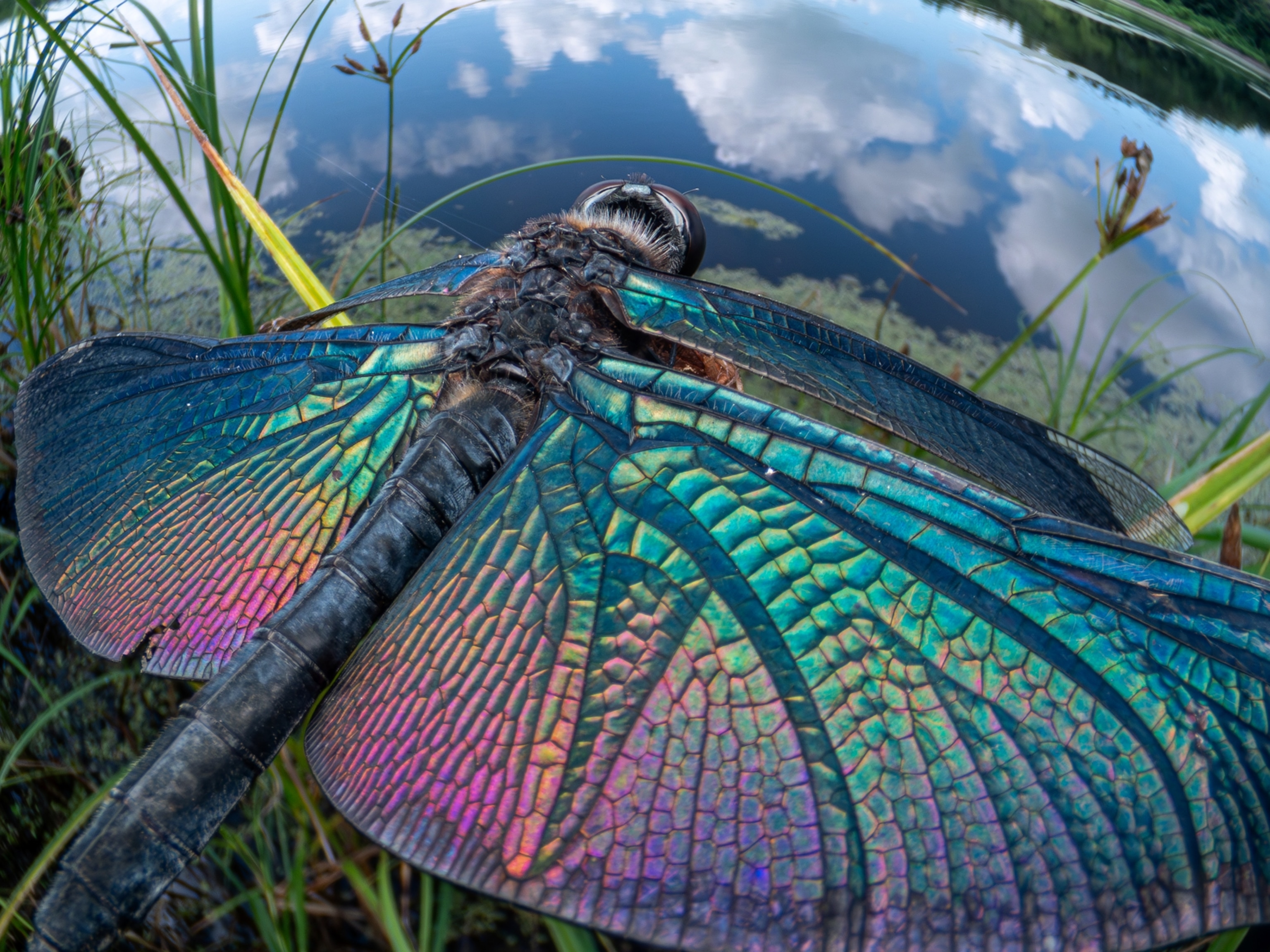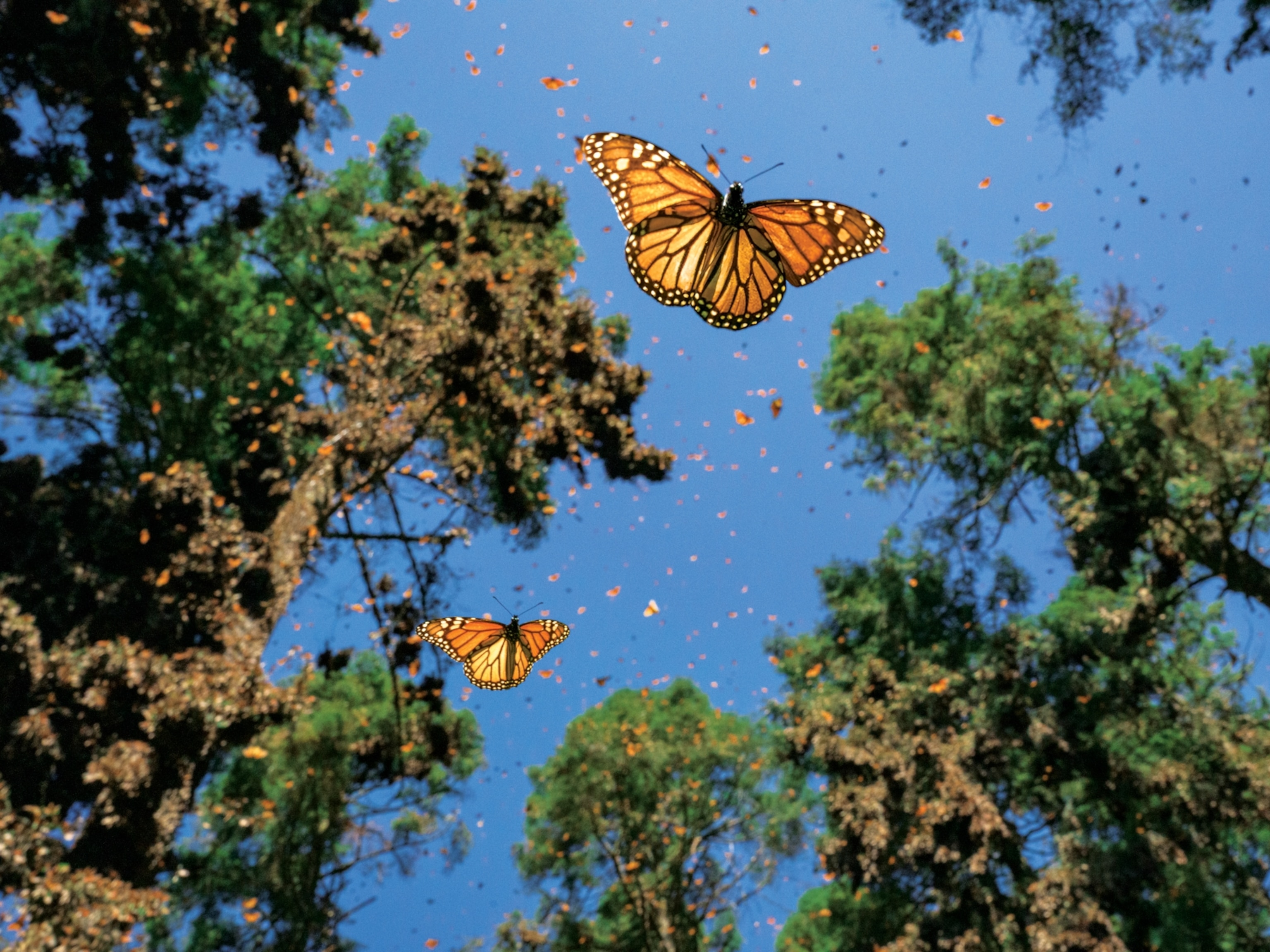
These Butterfly Wings Are Beautiful for a Reason
Earth day is Friday, April 22nd, and Proof is celebrating all week. This is the first post in a five-day series about our planet.
Look closely at the Atlas moth above and you’ll see that one of these wings is not like the other. We don’t usually notice, but in many butterflies and moths, the top and the underside of the wing are visually quite different.
That’s because they serve different purposes. “It’s really quite shocking,” says National Geographic photographer Robert Clark. “On the bottom side, one of them looks like a brown, deadish leaf, and then on the top side it’s blue and orange. It’s the perfect example of camouflage.” The butterfly he’s describing is the Sumatran Indian leafwing, seen here.

Lepidoptera (the order of insects that moths and butterflies belong to) have long intrigued Clark, drawing him to visit various insectariums and entomological collections whenever he gets the chance. It was on on a trip to the Academy of Natural Sciences in Philadelphia that he first saw the massive Victorian-era butterfly collection of American naturalist Titian Ramsay Peale. What inspired him about the display was the construction of the “Peale Box,” which lets viewers see the specimens from above and below.
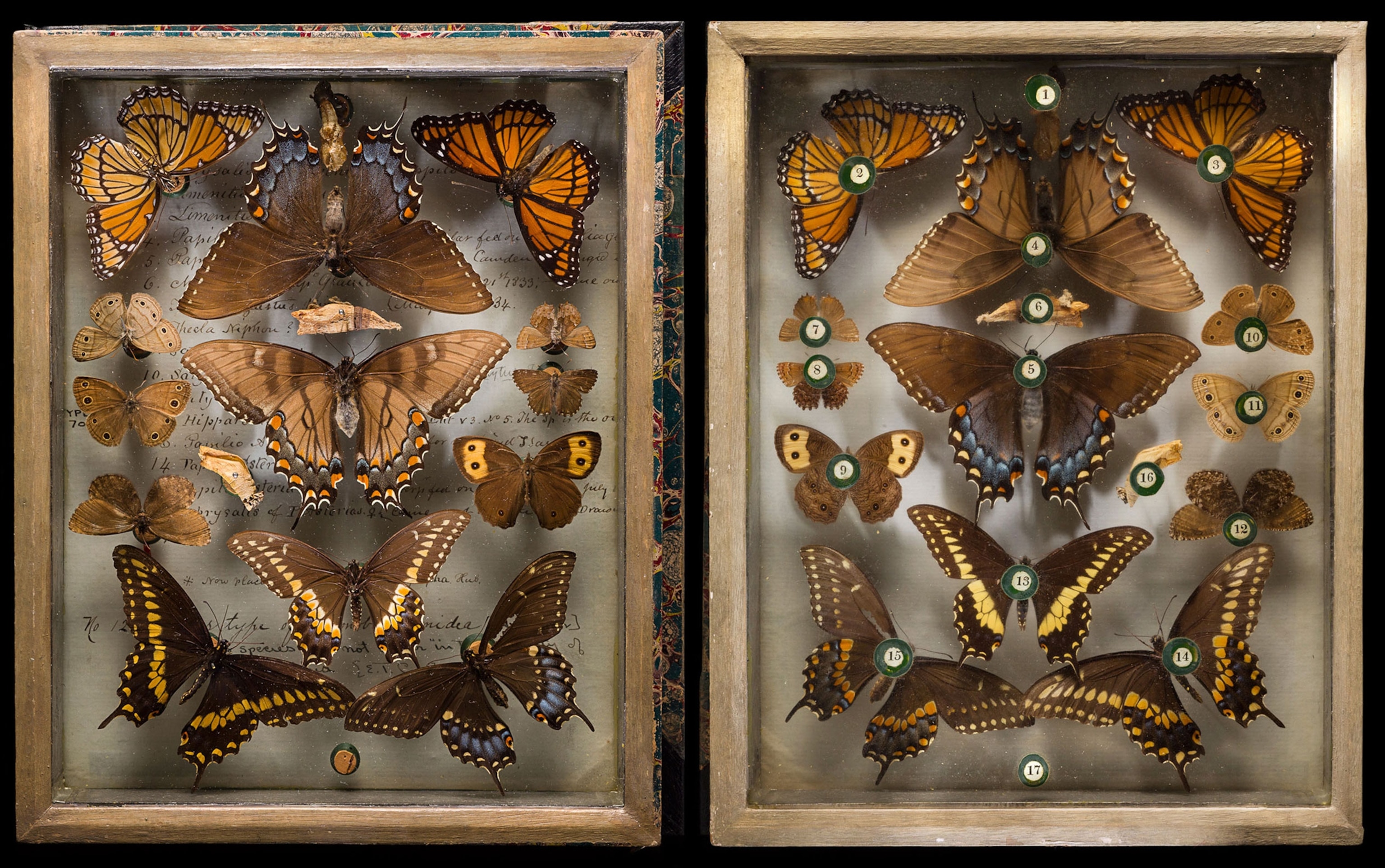
He began thinking about how he could photographically display the dualistic beauty of butterfly and moth wings. His solution? Create composite photos that showcase the top and bottom of the wing side by side, so you get the whole view at once: top on the left, bottom on the right.

The variation in wings illustrates how different species have adapted to their environments. “The colors are for blending in with flowers and sexual attraction,” Clark explains. “Vibrancy equals health.” The more muted tones allow the insects to blend in with leaves or brush. Clark heralds the creatures as visual proof of natural selection, something he’s become kind of obsessed with documenting. (He has a photo book about evolution coming out this fall.)
Moths and butterflies share a common ancestor, but they’ve evolved into different species over time. And one of them certainly has a more highly regarded reputation than the other. “I never knew moths were that beautiful,” Clark admits. But studying these creatures helped him to cultivate a real appreciation. “I didn’t think about it, but day-flying moths are equally as fascinating and beautiful.”
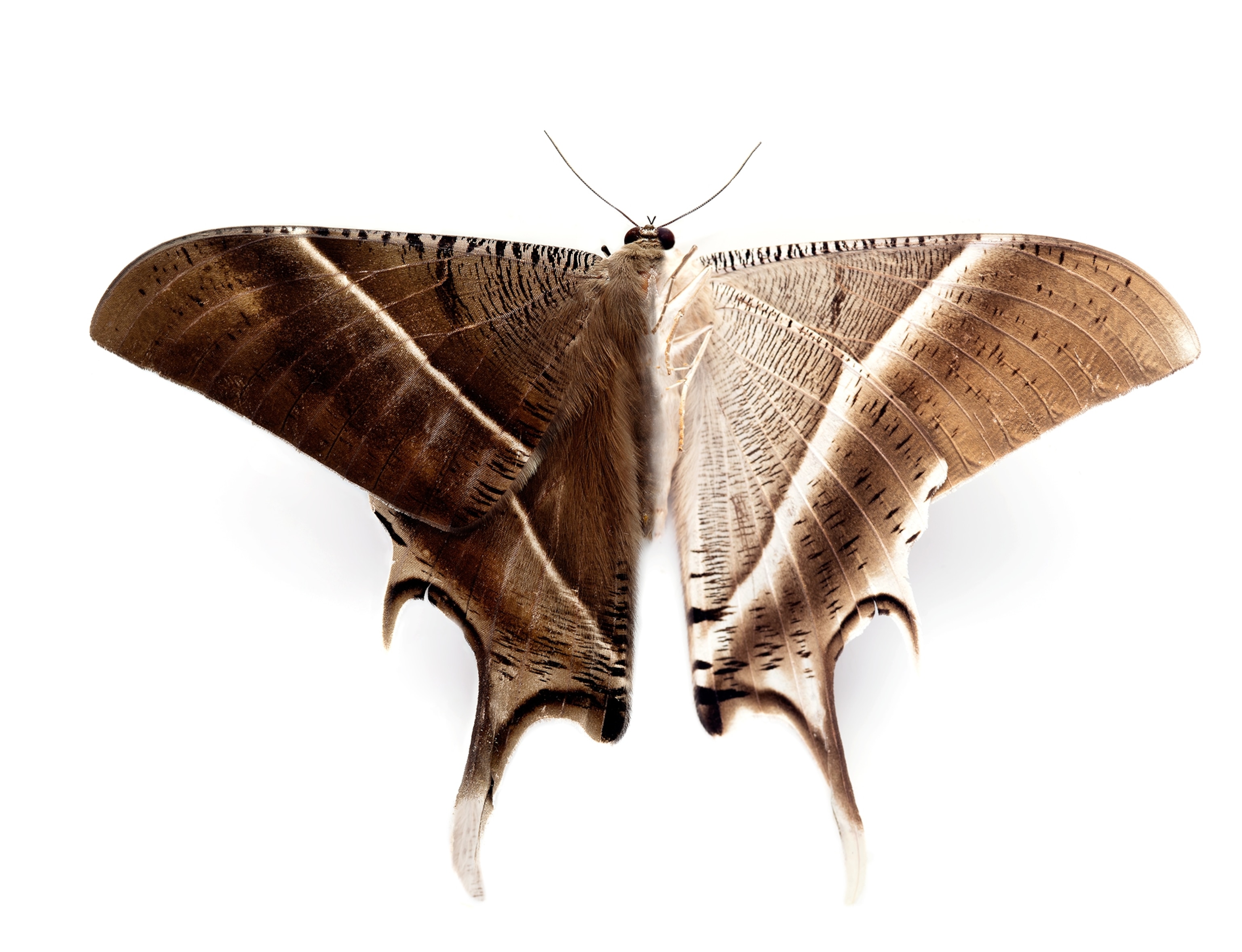
Can you blame him? When Clark waxes poetic about the majestic colors and contours of these wings, you know he’s onto something. They really are beautiful. Especially when you realize that all of the visual diversity exists for a reason—to help these creatures survive.

“They’re very fragile,” he says. “Butterflies, frogs, reptiles—they’re kind of the frontline indicators of something that’s changing.” They’re like the canary in the coal mine as far as climate change is concerned.
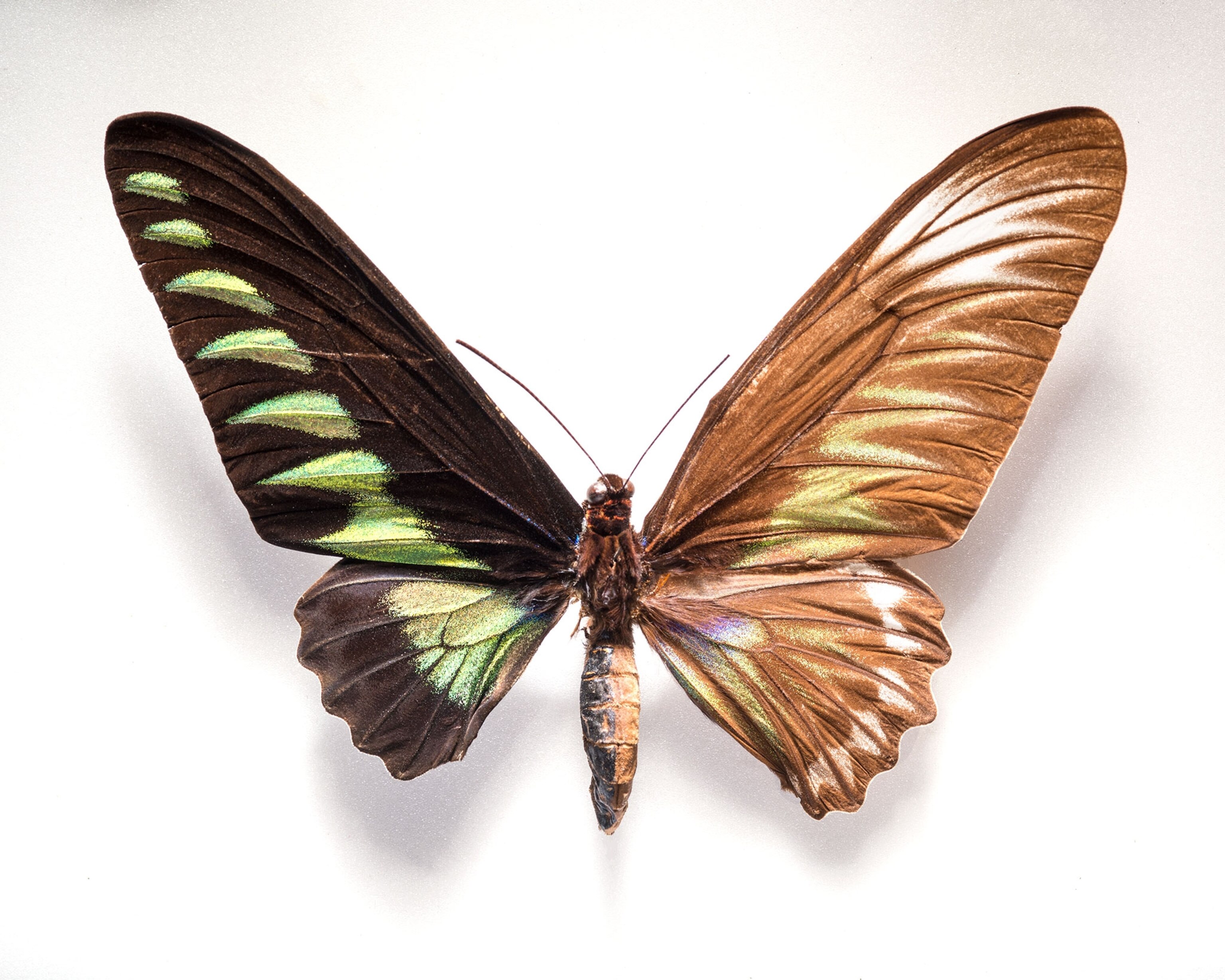
Clark remembers growing up as a kid in western Kansas, right along the monarch’s migratory path, which is now threatened. “I remember going down there [to a muddy little tributary], and there would be millions of monarchs,” he says. “They would just land on us and cover us.”
Like a lot of kids, his seven-year-old daughter loves butterflies. He says she’s probably drawn a thousand pictures of them. And he hopes, despite changing times, to help her cultivate the same sort of appreciation that he feels for these magnificent creatures. “That’s one of the fun things about doing this [project] is telling her about it. I’ll say, ‘Lola, why does that butterfly look like a leaf?’ and she’ll say, ‘So it doesn’t get eaten.’”
See Robert Clark’s brilliant photographs of plumage on National Geographic, and follow more of his work on his website and Instagram.


